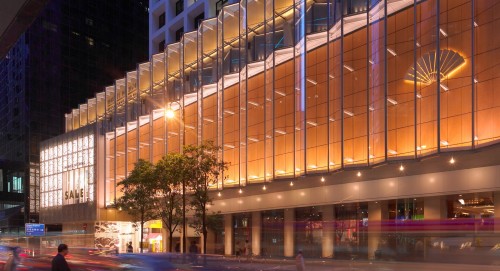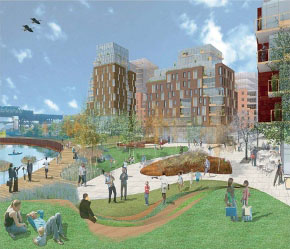This is second article in our summary series of the 2016 Cornell NYC Real Estate Conference.

Continuing along with the theme of disruption at the 34th Annual Cornell Real Estate Conference, “The Intersection of Change and the Design/ Built Environment” panel discussed how virtually every asset class is being reconceived and reconfigured to accommodate changes in technology and lifestyle. This panel was moderated by Bruce Batkin (AAP ’76), Co-Founder and Chief Executive of Terra Capital Partners, who was able to use his vast experience in real estate acquisition, finance, development, management, and investment banking to encourage a lively discussion amongst the panelists, who themselves span a wide variety of backgrounds and asset classes.
It is clear from listening to the panel that the way we think about designing a building had dramatically changed from what it once was, with occupant satisfaction being the center around which design decisions are made. One of the topics discussed by the panel was the use of passive buildings to enhance occupant experience.
Melissa Marsh, Senior Managing Director of Occupant Experience of Savills Studley, highlighted how this concept is no longer being exclusively used for homes, but office buildings as well, and how this design process is integrated with architectural design in order to produce a building that dramatically reduces its ecological footprint. This is one of the areas of research for potential solutions in the US for Marsh, who is the founder of PLASTARC, a consulting firm that studies tenant requirements and engages in research and product development to help clients make the most of their workspaces and buildings by enabling environments that enhance knowledge, accelerate business, and enrich employees.

Allison Novak, Principal of the Hudson Companies Inc, discussed how design changes are being used to enhance occupant experience in the residential and multifamily space. Under Novak’s leadership, Hudson launched its commitment to green building, which permeates its housing development projects from the affordable level to the high-end space.
Doug Hocking (AAP ’90), Principal of Kohn Pedersen Fox Associates, discussed how different cities worldwide are designing architectural technology that is at the forefront of architectural design, with many Asian cities now replacing European ones as the new frontiers for this technology. As Hocking has international projects in China, Qatar, Korea, and Japan, he is able to see how different cities are able to utilize different topologies and scales to develop new architectural designs.
Over the hour long discussion, this impressive panel touched on these insights, amongst many more, to provide those in attendance with a greater understanding of some of the new ways technology is being integrated into the various asset classes.
